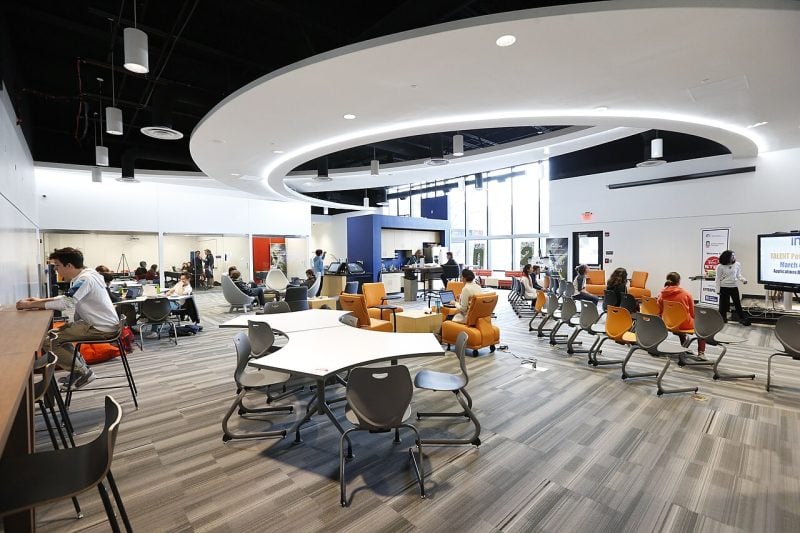The 30 Best Private Schools in the U.S.
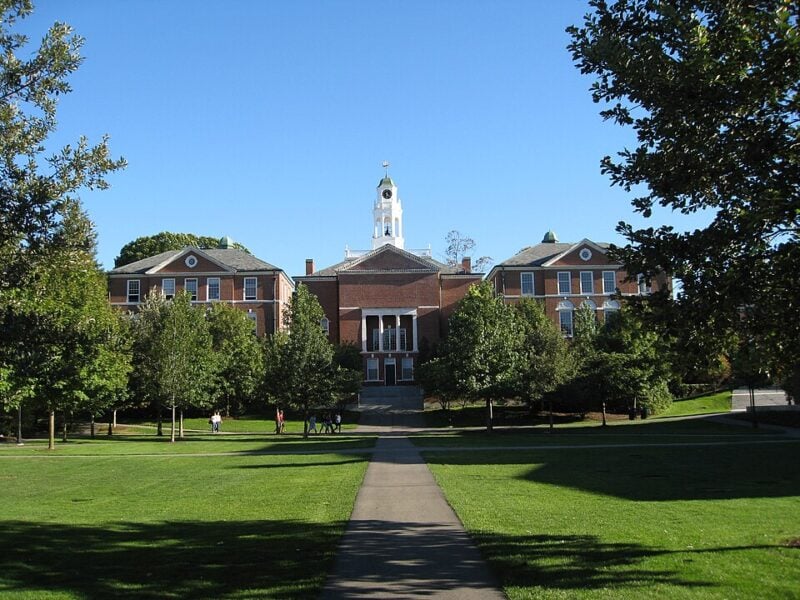
Private schools across the United States represent some of the most prestigious and academically rigorous educational institutions in the country. These schools consistently demonstrate excellence through small class sizes, highly qualified faculty, and comprehensive programs that prepare students for competitive college admissions.
The following rankings identify thirty elite private schools that stand out for their academic achievement, college preparation, and overall educational excellence.
From established New England boarding schools to innovative day schools in major metropolitan areas, these institutions offer diverse educational approaches while maintaining consistently high standards.
The schools featured span various regions and educational philosophies, including both single-gender and coeducational options. Each institution brings unique strengths in areas such as STEM programs, arts education, athletics, and specialized curricula designed to foster individual student growth.
Here are the 30 best private schools in the U.S.
1. Phillips Exeter Academy
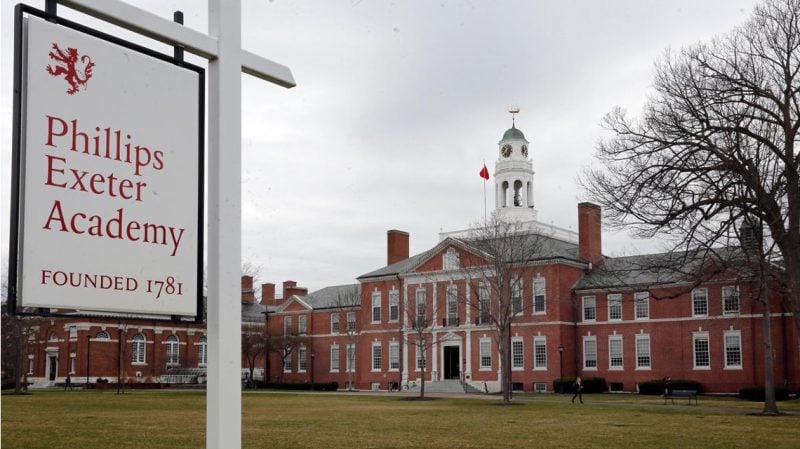
Phillips Exeter Academy stands as one of America’s most prestigious private schools. Located in Exeter, New Hampshire, this co-educational institution was established in 1781, making it the sixth-oldest boarding school in the United States.
The school serves approximately 1,100 students in grades 9-12, plus postgraduate students. Students come from across the U.S. and 37 foreign countries, creating a diverse learning environment.
Exeter ranks 2nd among college preparatory private high schools nationally and 3rd among all private high schools in America. The school places within the top 20% of private schools in New Hampshire.
The academy is renowned for its innovative Harkness teaching method. This approach involves discussion-based learning around oval tables, fostering critical thinking and collaboration among students.
Exeter offers over 30 study abroad programs spanning nearly a dozen countries across five continents.
2. St. Paul’s School
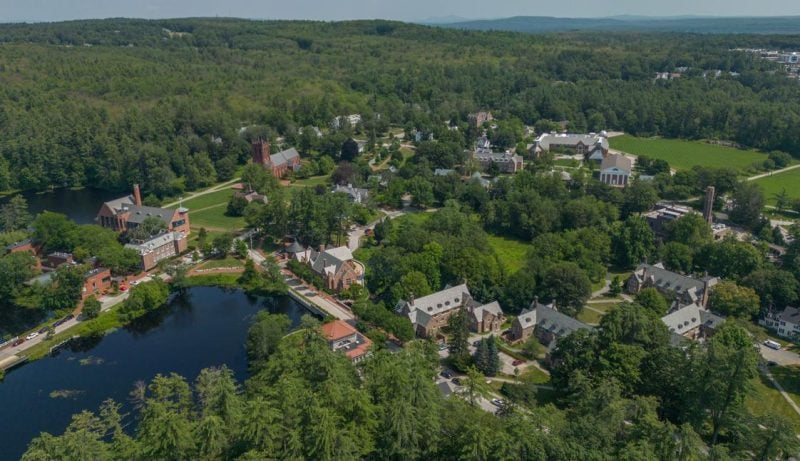
St. Paul’s School stands as one of America’s most prestigious boarding institutions. Founded in 1856, this New Hampshire school operates as a 100% boarding high school.
The school serves 539 students alongside 113 teachers who live and learn together on campus. This residential model creates an immersive educational environment focused on character development and academic excellence.
St. Paul’s attracts a diverse student population from 34 states and 28 countries. This geographic diversity enriches the campus community and provides students with global perspectives.
Nearly 40% of students receive financial aid, making the school accessible to families across income levels. Students from families earning up to $150,000 annually typically qualify for full tuition support.
The school’s commitment to both academic rigor and character formation has established its reputation among elite preparatory institutions. Its long history and selective admissions process contribute to its standing in American education.
3. The Lawrenceville School
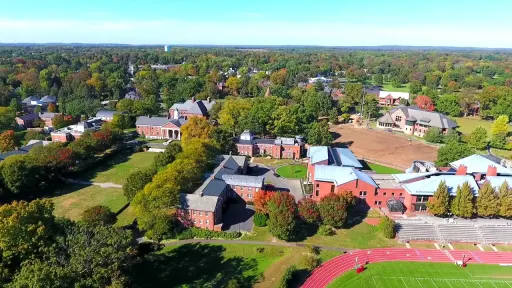
The Lawrenceville School stands as one of America’s premier boarding institutions. Founded in 1810, this New Jersey school serves 824 students in grades 9-12.
The school ranks 7th among the nation’s best boarding high schools. It holds the 14th position among America’s top college preparatory private schools out of nearly 5,000 institutions.
Lawrenceville employs the distinctive Harkness teaching method. This approach emphasizes collaborative learning and student engagement in small classroom settings.
The school maintains strong academic standards with average SAT scores exceeding 1400. Students frequently gain admission to Ivy League universities, with Princeton University being a common destination.
Located in Lawrence Township near Princeton, the school creates a vibrant global community. International students comprise 16% of the student body, adding diversity to campus life.
The institution offers Advanced Placement courses and supports 43 different sports programs. This combination provides students with comprehensive academic and athletic opportunities.
4. Horace Mann School
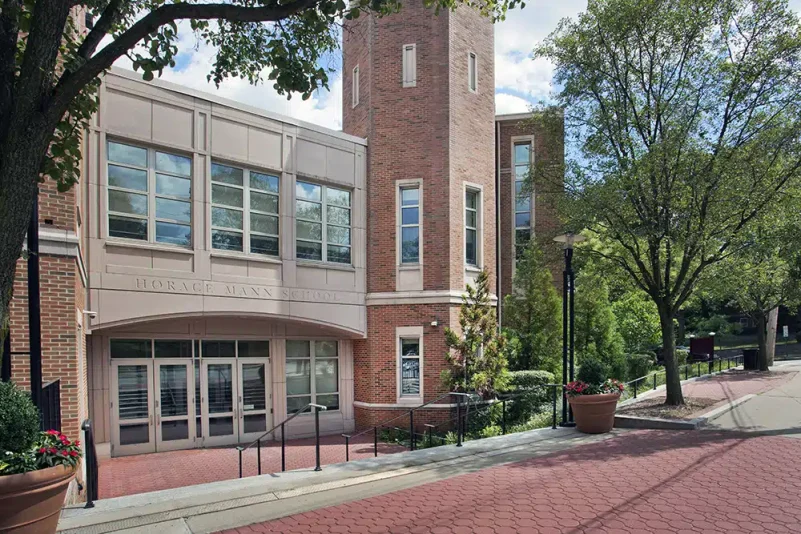
Horace Mann School stands as one of America’s premier private institutions, ranking 8th among the nation’s best college preparatory high schools. Founded in 1887, this coeducational day school serves students from nursery through twelfth grade in the Bronx, New York.
The school enrolls approximately 1,780 students across all grade levels. Its rigorous academic program attracts talented students from the New York metropolitan area, drawing from as far as 50 miles away and three different states.
Horace Mann operates on a trimester schedule and offers over 180 courses across nine disciplines. The curriculum includes more than 20 Advanced Placement classes and 26 Honors courses, providing students with extensive academic opportunities.
As a member of the Ivy Preparatory School League, Horace Mann maintains its reputation as a Harvard University feeder school. The institution admits students regardless of race, color, religion, gender identity, sexual orientation, national origin, or disability status.
5. The Hotchkiss School
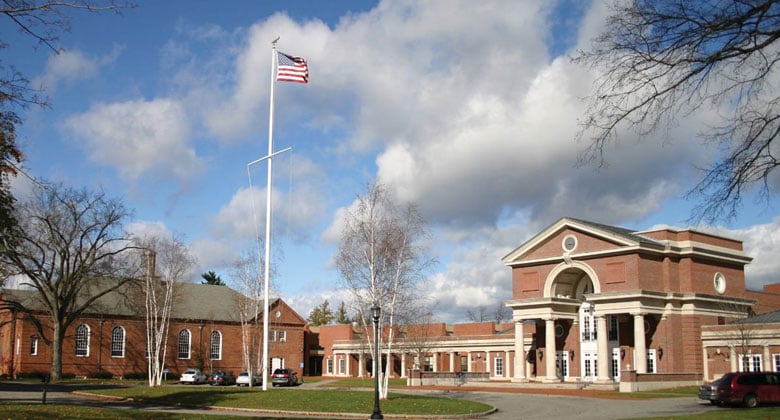
The Hotchkiss School stands as one of Connecticut’s premier boarding institutions. Founded in 1891, this independent preparatory school serves approximately 600 students in grades 9-12 plus postgraduates.
Located in Lakeville, Connecticut, Hotchkiss maintains a highly residential community. Ninety-six percent of students live in the school’s 13 residence halls.
The school demonstrates exceptional selectivity with a 21% acceptance rate. This competitive admission rate places Hotchkiss among the nation’s most elite boarding schools.
Hotchkiss ranks within the top 20% of private schools in Connecticut. The institution consistently appears on national rankings of America’s best private high schools.
The school has prioritized accessibility since its founding. Hotchkiss was an early advocate for student financial aid, accepting scholarship students from its inception.
Students come from across the United States and internationally. Graduates typically attend highly selective universities and colleges nationwide.
6. Choate Rosemary Hall
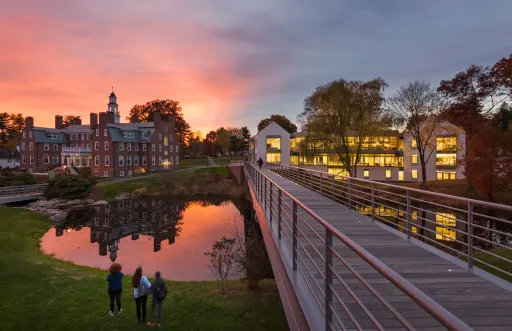
Choate Rosemary Hall stands as one of America’s premier private institutions. The school ranks 4th among the nation’s best private high schools and maintains its position in the top 20% of Connecticut private schools.
Located in Wallingford, Connecticut, Choate serves 865 students in grades 9-12. The school operates as both a boarding and day institution, accepting students through the postgraduate level.
The campus offers extensive academic and extracurricular opportunities. Students benefit from a strong liberal arts program designed to foster intellectual growth and personal development.
Choate’s reputation attracts talented students from diverse backgrounds. The school emphasizes academic excellence while providing numerous pathways for exploration and self-discovery.
The institution consistently receives recognition for its educational quality. Recent rankings place Choate among the top private schools nationally, reflecting its commitment to academic rigor and student success.
7. The Dalton School
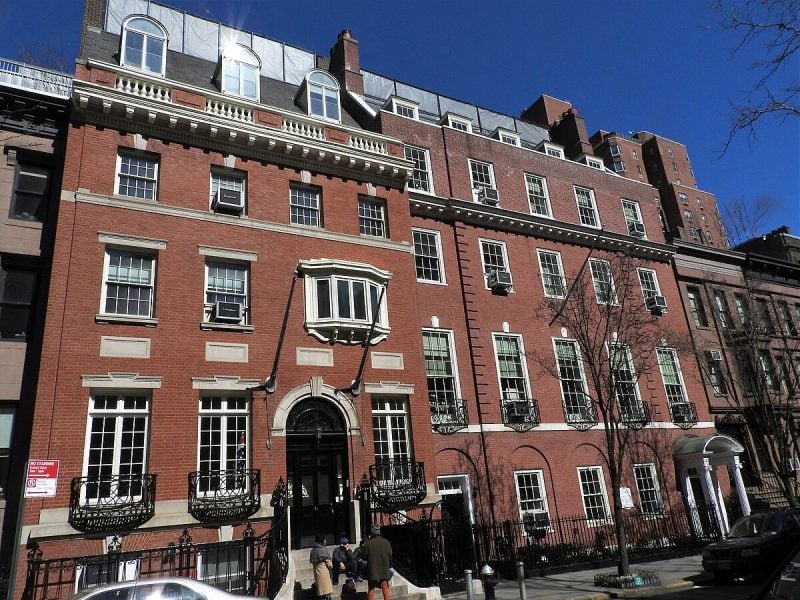
The Dalton School stands as one of New York City’s most prestigious private institutions. Located on Manhattan’s Upper East Side, this K-12 day school serves 1,319 students.
Founded in 1919 by progressive educator Helen Parkhurst, Dalton operates on the innovative Dalton Plan. This educational approach has been adopted by schools worldwide.
The school ranks 13th among America’s best private K-12 schools. It places 26th nationally for college preparatory high schools according to current rankings.
Dalton offers a comprehensive curriculum spanning humanities, sciences, arts, and athletics. Students can pursue world languages, classical studies, and extensive fine arts programs.
The school maintains strong university placement records as a recognized feeder school. Its rigorous academic program combines with innovative teaching methods to prepare students for elite colleges.
Admission remains highly competitive given Dalton’s reputation and academic excellence.
8. Roxbury Latin School

The Roxbury Latin School stands as America’s oldest boys’ school in continuous operation. Founded in 1645 by Puritan missionary John Eliot, this West Roxbury institution has educated students for nearly four centuries.
The school serves 310 students in grades 7-12 on a spacious 117-acre campus. As an all-boys college preparatory day school, it maintains a focused academic environment designed for male students.
Roxbury Latin ranks 7th among America’s best all-boys high schools according to recent national rankings. The school also places in the top 20% of private schools throughout Massachusetts.
The institution operates as a Harvard University feeder school, reflecting its strong college preparation standards. Students benefit from small class sizes and rigorous academic programming.
The school’s substantial endowment, supported by alumni and parent contributions, enables competitive facilities and educational resources. This financial foundation helps maintain the institution’s academic excellence and campus infrastructure.
9. Groton School
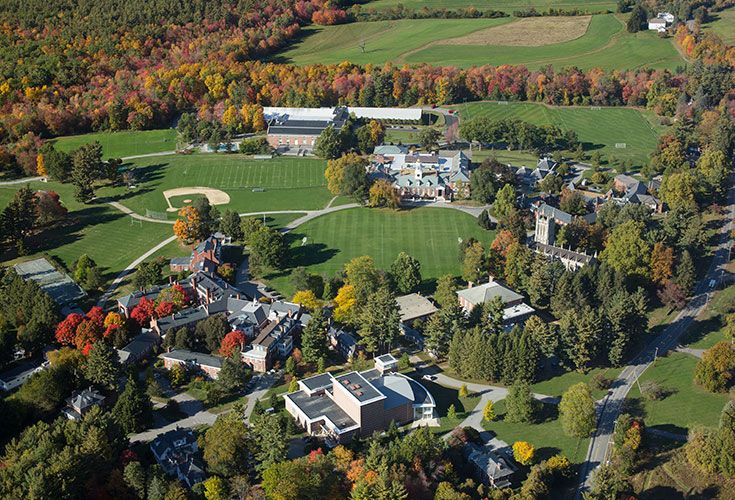
Groton School leads Niche’s 2025 rankings as the best private high school in America. The Episcopal-affiliated institution serves 378 students in grades 8-12 in Groton, Massachusetts.
Founded in 1884, this co-educational boarding and day school offers a college-preparatory curriculum. The school ranks within the top 20% of private schools in Massachusetts.
Groton has shown consistent improvement in national rankings. The school moved up 12 spots from previous years, climbing from 33rd place in 2020 to 17th in 2021.
The campus features an expansive athletic complex, Campbell Performing Arts Centre, and state-of-the-art science laboratories. These facilities support the school’s comprehensive educational approach.
Approximately 7% of Groton’s 380 students are international. The school maintains a reputation as a Harvard University feeder school, placing it among the top 30 institutions sending graduates to Harvard.
10. Milton Academy
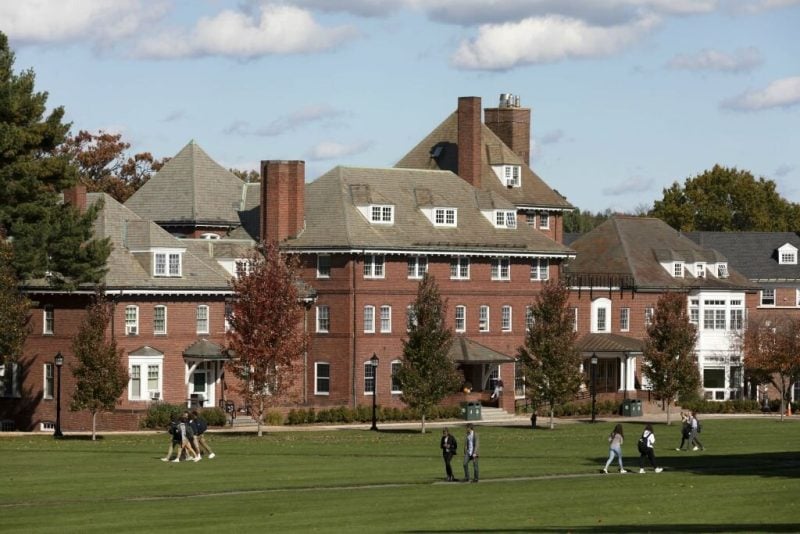
Milton Academy stands as one of America’s premier private institutions, ranking 21st among all private K-12 schools nationwide. The Massachusetts school serves 1,020 students from kindergarten through 12th grade.
Founded in 1798, this coeducational college preparatory school operates as both a boarding and day school. Students in grades 9-12 can board on campus, while day students attend from kindergarten through senior year.
The school maintains its position as the top private K-12 institution in Massachusetts. Milton Academy also ranks 22nd among boarding high schools nationally, demonstrating consistent academic excellence.
Located in Milton, Massachusetts, the school has built a reputation as a Harvard University feeder school. The institution focuses on developing confident, creative, and independent thinkers through rigorous academic programs.
Milton Academy’s 183 graduating seniors in 2025 continue the school’s tradition of preparing students for top colleges and universities across the nation.
11. Deerfield Academy
Deerfield Academy stands as one of America’s most prestigious boarding schools. Founded in 1797, it ranks among the oldest secondary schools in the United States.
The school serves 651 students in grades 9-12 in Deerfield, Massachusetts. It operates as both a boarding and day school with a coeducational student body.
Deerfield maintains exceptional selectivity with an acceptance rate of approximately 12%. This places it among New England’s most competitive private schools, far below the national average of 85%.
The academy consistently ranks within the top 20% of Massachusetts private schools. According to 2025 rankings, it holds the 14th position among America’s best boarding high schools.
Deerfield Academy serves as a Princeton University feeder school based on college placement data. The school enrolls students from grades 9 through postgraduate year, with 13% international enrollment.
12. Emma Willard School
Emma Willard School stands as one of America’s premier all-girls boarding and day schools. Founded in 1814 in Troy, New York, the institution serves 355 students in grades 9-12.
The school ranks 27th among all-girls high schools nationally. It also places in the top 20% of private schools in New York state.
Emma Willard offers a rigorous college-preparatory curriculum with extensive Advanced Placement courses. The academic program emphasizes intellectual curiosity and disciplined study habits through exceptional faculty.
Students can choose between boarding and day programs. The school provides 17 different sports alongside its academic offerings.
Originally called Troy Female Seminary, Emma Willard has maintained its focus on empowering young women for over two centuries. The institution continues its legacy of educational excellence and innovation in girls’ education.
13. Trinity School (New York)
Trinity School stands as one of America’s oldest educational institutions, founded in 1709. Located on Manhattan’s Upper West Side at 139 West 91st Street, the school serves 997 students from nursery through grade 12.
The coeducational Episcopal college preparatory school ranks within the top 20% of private schools in New York. Trinity consistently receives recognition as one of the nation’s best private schools.
The school offers rigorous academics alongside comprehensive programs in athletics and the arts. Students benefit from peer leadership opportunities and global travel experiences.
Trinity maintains a reputation as a Harvard University feeder school. The institution’s long history and academic excellence have established it as one of New York City’s most prestigious independent schools.
The school emphasizes intellectual and personal growth within a vibrant community environment. Trinity’s challenging curriculum prepares students for success at top universities nationwide.
14. The Brearley School
The Brearley School stands as one of America’s premier all-girls private institutions. Located on Manhattan’s Upper East Side, this prestigious school has educated young women since 1884.
Brearley serves approximately 770 students across grades K-12. The school maintains small class sizes with about 50 to 65 students per grade and an 8:1 student-teacher ratio.
The institution ranks among the top private schools nationally. It holds the distinction of being ranked first among all-girls high schools in America and third among private K-12 schools nationwide.
Founded to provide girls with educational opportunities equal to their male counterparts, Brearley continues this mission today. The school challenges students of diverse backgrounds to think critically and creatively.
Brearley functions as a feeder school to top universities, including Harvard. Its rigorous academic program prepares students for competitive college admissions and future leadership roles.
15. The Thacher School
The Thacher School is a private coeducational boarding school located in Ojai, California, serving students in grades 9-12. Founded in 1889 as a boys’ school, it became coeducational in 1977.
The school enrolls 259 students and sits 85 miles northwest of Los Angeles. It holds the distinction of being California’s oldest coeducational boarding school and the oldest private boarding school west of the Mississippi River.
Thacher ranks 18th among the best boarding high schools in America according to recent rankings. The school also places 22nd among the best college prep private high schools nationally.
The institution emphasizes experiential learning through its distinctive outdoor programs, including camping and horseback riding requirements. Students live by an Honor Code that emphasizes integrity and personal responsibility.
Thacher’s educational philosophy centers on preparing students for leadership roles through challenging academics and character development outside traditional classroom settings.
16. Noble and Greenough School
Noble and Greenough School, commonly known as Nobles, operates as a coeducational day and five-day boarding school in Dedham, Massachusetts. Founded in 1866, the institution serves students in grades 7-12.
The school enrolls approximately 620-638 students total. Day students attend grades 7-12, while boarding students join in grades 9-12.
Nobles maintains highly selective admission standards with a 16% acceptance rate. This selectivity places it among the most competitive private schools nationally.
Academic performance remains consistently strong. Students achieve a median SAT score of 1440 and median ACT score of 32.
The school ranks within the top 20% of private schools in Massachusetts. Recent rankings position Nobles as the second-best school in the state according to some evaluations.
Standard admission requirements include transcripts, recommendation letters, application essays, and interviews. The school seeks students committed to contributing to its inclusive community environment.
17. Convent of the Sacred Heart
Convent of the Sacred Heart stands as Manhattan’s oldest independent girls’ school, founded in 1881 by the Society of the Sacred Heart. The institution serves 684 students from Pre-K through grade 12.
The school ranks within the top 20% of private schools in New York. It operates three distinct divisions: Lower School for Pre-K through grade 4, Middle School for grades 5-8, and Upper School for grades 9-12.
Located in the historic Otto H. Kahn House, the school moved to this Manhattan location in the 1930s after outgrowing its original Madison Avenue brownstone. Sacred Heart emphasizes service learning as a core component of its educational philosophy.
The institution maintains its Catholic educational tradition while operating as an independent school. Students participate in community service programs including volunteer work with underserved populations and senior citizens.
18. Lakeside School
Lakeside School stands as one of America’s most prestigious private institutions. Located in Seattle, Washington, this college preparatory day school serves students in grades 5-12.
The school consistently ranks among the nation’s top private schools. According to 2025 rankings, Lakeside holds the number one position for private high schools in Washington State and ranks 52nd nationally.
Founded in 1919, Lakeside enrolls approximately 780 day students. The school operates as a coeducational institution focused on rigorous academic preparation.
Lakeside has produced notable alumni including Microsoft founders Bill Gates and Paul Allen. This connection highlights the school’s tradition of fostering innovative thinking and entrepreneurial success.
The institution functions as a Stanford University feeder school, demonstrating its strong college preparatory focus. Students benefit from challenging academics and comprehensive preparation for higher education.
19. Sidwell Friends School
Sidwell Friends School operates as a prestigious Quaker day school with campuses in Washington, DC and Bethesda, Maryland. Founded in 1883 by Thomas Sidwell, the institution serves 1,142 students from prekindergarten through grade 12.
The school ranks 11th among America’s best private K-12 schools and 29th for college preparatory programs. It places within the top 20% of private schools in the District of Columbia.
Sidwell Friends gained national recognition as the school choice for several presidential families. The Obama and Clinton children attended the institution, following the earlier precedent set by the Kennedy family.
The curriculum emphasizes Quaker values including reflection, service, stewardship, and equity. Students can access Advanced Placement courses and participate in 19 different sports programs.
The school maintains its commitment to ethical education while providing rigorous academic preparation for college-bound students.
20. Harvard-Westlake School
Harvard-Westlake School operates as an independent, coeducational college preparatory institution in Los Angeles, California. The school serves 1,616 students across grades 7-12 on two separate campuses.
The institution consistently ranks among California’s top private schools. Recent rankings place Harvard-Westlake as the best private school in California and fifth nationally.
Harvard-Westlake maintains a reputation for rigorous academics and comprehensive college preparation. The school emphasizes both academic excellence and character development through its curriculum.
The diverse student body benefits from extensive extracurricular programs and strong college placement services. Many graduates gain admission to prestigious universities nationwide.
The school’s mission focuses on creating an inclusive community dedicated to educational excellence and integrity. Students engage in programs designed to develop leadership skills and social responsibility.
Harvard-Westlake’s dual-campus structure allows for age-appropriate facilities and programming for middle and high school students.
21. St. Albans School
St. Albans School stands as one of Washington D.C.’s most prestigious private institutions. Founded in 1909, this all-boys Episcopal college preparatory school serves students in grades 4-12.
The school operates both day and boarding programs. It enrolls approximately 576 students across its grade levels. Boarding options are available specifically for grades 9-12.
Located on the National Cathedral campus, St. Albans spans over 50 acres. The facilities include state-of-the-art resources for academics, athletics, and arts programs.
St. Albans ranks within the top 20% of private schools in the District of Columbia. The institution maintains a reputation as a Harvard University feeder school.
The school offers 15 different sports programs alongside its rigorous academic curriculum. Its commitment to both academic excellence and character development has earned consistent national recognition among top private schools.
22. The Hockaday School
The Hockaday School operates as an independent college-preparatory day school for girls in Dallas, Texas. Founded in 1913, the institution serves students from prekindergarten through twelfth grade.
The school enrolls approximately 1,110 students across all grade levels. It maintains accreditation through the Independent Schools Association of the Southwest.
Hockaday ranks 8th among all-girls high schools nationally and 31st among private K-12 schools in America. The institution places 44th in college preparatory private high schools nationwide.
The school’s student body reflects significant diversity, with minority enrollment comprising 53.8% of the population. This secular institution emphasizes four foundational principles: Character, Courtesy, Scholarship, and Athletics.
Hockaday holds the distinction of being the nation’s largest independent girls’ school serving prekindergarten through grade 12. The institution consistently appears among top-ranked private schools in Texas and maintains competitive standing among Dallas-area educational institutions.
23. Collegiate School
Collegiate School stands as one of New York’s premier private educational institutions. The school serves 649 students across grades Kindergarten through 12 in New York City.
The institution ranks within the top 20% of private schools throughout New York state. This ranking reflects the school’s commitment to academic excellence and student achievement.
Collegiate School operates as a comprehensive K-12 program. Students benefit from consistent educational standards and curriculum alignment across all grade levels.
The school’s location in New York City provides students with unique educational opportunities. Access to museums, cultural institutions, and academic resources enhances the learning experience.
Collegiate School maintains a strong reputation for preparing students for higher education. The institution focuses on developing critical thinking skills and academic rigor across all disciplines.
24. Faith Middle School
Faith Middle School stands as a distinguished private educational institution known for its strong academic foundation. The school maintains a commitment to providing quality education in a nurturing environment.
The institution offers a comprehensive curriculum designed to challenge students academically. Small class sizes allow for personalized attention and stronger teacher-student relationships.
Faith Middle School emphasizes character development alongside academic achievement. Students participate in various extracurricular activities that promote leadership skills and community involvement.
The school’s faculty consists of experienced educators dedicated to student success. They implement innovative teaching methods to engage students across different learning styles.
Campus facilities support both academic and recreational activities. The school provides resources necessary for a well-rounded educational experience.
Faith Middle School serves families seeking a private education option that balances rigorous academics with personal growth opportunities.
25. Regis High School
Regis High School stands as the only tuition-free private Jesuit high school in the United States. Located in Manhattan, New York, this all-boys Catholic school serves 530 students in grades 9-12.
The school maintains highly selective admissions standards. Fewer than 10% of applicants gain acceptance each year. Students are chosen based on academic potential and personal qualities assessed through interviews.
Regis consistently ranks among the top 25 private high schools nationally. The school maintains a 10:1 student-to-faculty ratio and achieves 100% college enrollment rates for graduates.
Students receive a rigorous Jesuit education focused on academic excellence and service. The curriculum prepares young men for leadership roles while emphasizing generosity and community service.
Graduates typically score in the top 1% nationally on standardized tests. The school provides individualized college counseling and has earned recognition as a top Catholic high school.
26. Madeira School
The Madeira School stands as Virginia’s premier all-girls boarding and day school. Located in McLean, Virginia on a 376-acre campus, the school serves 324 students in grades 9-12.
Madeira consistently ranks among the nation’s top educational institutions. The school earned the #4 position for Best Girls High School in America out of 293 schools evaluated.
The institution also secured a spot in the top 20 Best Boarding Schools nationally out of 438 schools. Among all 5,057 private schools evaluated, Madeira ranks in the top 1%.
Founded in 1931, Madeira operates as an elite college-preparatory institution. The school combines rigorous academics with boarding and day student options just minutes from Washington, DC.
Madeira’s educational excellence extends beyond state boundaries while maintaining its position as Virginia’s leading girls’ school.
27. Davidson Academy
Davidson Academy in Nashville, Tennessee serves 645 students from nursery through 12th grade. The school earned recognition as the No. 4 high school in the United States according to U.S. News & World Report’s 2023-2024 rankings.
The institution ranks within the top 20% of private schools in Tennessee. It provides a Christian interdenominational environment focused on college preparation.
Students have access to Advanced Placement courses and can participate in 17 different sports programs. The school maintains small class sizes that allow for individualized attention between teachers and students.
Davidson Academy received full accreditation from the Southern Association of Colleges and Schools in 1987. The curriculum emphasizes spiritual, intellectual, physical, and social development to prepare students for higher education.
28. The Loomis Chaffee School
The Loomis Chaffee School stands as Connecticut’s third-ranked private high school and ranks 25th among America’s best private high schools. This independent college preparatory institution serves 703 students in grades 9-12.
Located in Windsor, Connecticut, the school operates as both a boarding and day school. Founded in 1874, Loomis Chaffee maintains a diverse student body with approximately 12% international enrollment.
The school ranks 10th among the nation’s best boarding high schools. It holds the top position for private high schools in the Hartford area.
Loomis Chaffee offers rigorous academic programs alongside championship-level athletics and expansive arts programs. The institution focuses on developing students’ commitment to personal excellence and community service.
The school’s mission centers on inspiring students toward their best selves while contributing to the common good.
29. Cranbrook Schools
Cranbrook Schools sits on a 319-acre campus in Bloomfield Hills, Michigan. The institution serves 1,673 students from prekindergarten through grade 12.
The school ranks 23rd among America’s best private K-12 schools according to 2025 rankings. It also holds the 24th position among the nation’s top boarding high schools.
Cranbrook operates as both a day and boarding school. The campus includes a co-educational elementary school, separate middle schools for boys and girls, and a co-educational college-preparatory high school.
The school draws students from around the world, creating a global learning community. Cranbrook ranks within the top 20% of private schools in Michigan.
The institution offers comprehensive college-preparatory education with extensive academic, artistic, and athletic programs. Students benefit from small class sizes and individualized attention from faculty members.
30. Foxcroft School
Foxcroft School stands as a distinguished all-girls college-preparatory institution in Middleburg, Virginia. Founded in 1914 by Charlotte Haxall Noland, the school serves students in grades 9-12 and offers a postgraduate program.
The school operates as both a boarding and day school with approximately 173 students. This small enrollment creates an intimate learning environment that fosters close relationships between students and faculty.
Foxcroft ranks within the top 20% of private schools in Virginia. The institution maintains a strong academic reputation with a focus on preparing young women for college success.
The school emphasizes leadership development and lifelong learning. Students benefit from a rigorous curriculum designed to build confidence and academic excellence.
Located near Virginia’s horse country, Foxcroft incorporates equestrian programs into its offerings. The school attracts both domestic and international students, with roughly 20% of the student body coming from abroad.
What Sets Top Private Schools Apart
Elite private schools distinguish themselves through rigorous academic programs that often surpass public school offerings, highly selective admissions processes that create competitive learning environments, and exceptional faculty with advanced degrees who maintain low student-teacher ratios.
Academic Excellence and Advanced Curriculum
Top private schools offer Advanced Placement (AP) courses that typically exceed public school availability. Many elite institutions provide 15-20 AP subjects compared to the national average of 8-10.
These schools implement International Baccalaureate (IB) programs and specialized tracks in STEM, humanities, and arts. Students access college-level coursework during high school years.
Graduation requirements often surpass state mandates. Private schools typically require four years of mathematics, science, English, and foreign language study.
Many institutions maintain partnerships with universities for dual enrollment programs. Students earn college credits while completing high school requirements.
Standardized test scores reflect this academic rigor. Top private schools report average SAT scores of 1400-1500, significantly above the national average of 1050.
Selective Admissions Process
Elite private schools accept 10-20% of applicants compared to automatic enrollment in most public schools. This selectivity creates academically motivated student bodies.
Application requirements include standardized test scores, essays, interviews, and recommendation letters. Many schools require SSAT or ISEE entrance exams.
Schools evaluate extracurricular achievements, leadership experience, and community service. Athletic ability and artistic talent often influence admission decisions.
Legacy admissions and development cases affect acceptance rates at established institutions. Sibling preferences and alumni connections provide advantages.
Wait lists are common due to limited enrollment capacity. Schools typically enroll 100-400 students per grade level.
Faculty Expertise and Student-Teacher Ratios
Private schools maintain student-teacher ratios of 8:1 to 12:1 compared to public school averages of 16:1 or higher. This allows for individualized attention and personalized instruction.
Advanced degrees are standard among faculty. Approximately 75-85% of teachers hold master’s degrees, with many possessing doctoral degrees in their subject areas.
Teachers often specialize in single subjects rather than teaching multiple disciplines. This expertise enables deeper subject knowledge and more effective instruction.
Professional development opportunities are extensive. Schools invest in ongoing teacher training and conference attendance to maintain educational quality.
Compensation packages attract top talent through competitive salaries and comprehensive benefits that often exceed public school offerings.
The Role of Extracurriculars and Campus Life
Top private schools distinguish themselves through comprehensive programs that extend learning beyond traditional academics. These institutions typically offer extensive athletic programs, diverse fine arts opportunities, structured leadership development, and meaningful community service initiatives that shape student character and college readiness.
Athletics and Fine Arts Programs
Private schools maintain competitive athletic programs across multiple sports levels. Most top institutions offer varsity, junior varsity, and freshman teams in traditional sports like football, basketball, soccer, and tennis.
Many schools also provide specialized athletic facilities. These include regulation-size gymnasiums, swimming pools, tennis courts, and training centers with modern equipment.
Fine arts programs receive equal emphasis at leading private schools. Students access professional-grade theaters, music studios, and art galleries on campus.
Music programs often include multiple ensembles and individual instruction. Drama departments typically produce several shows annually with full technical support.
These programs help students develop discipline and teamwork skills. They also provide pathways for college recruitment and scholarship opportunities.
Student Leadership Opportunities
Private schools create structured leadership development through student government and specialized programs. Most institutions have student councils, honor societies, and peer mentoring systems that give students real decision-making authority.
Leadership positions extend beyond traditional roles. Students serve as club presidents, team captains, and community service coordinators with meaningful responsibilities.
Many schools offer leadership training workshops and conferences. These programs teach public speaking, project management, and collaborative problem-solving skills.
Student-led initiatives often shape campus policies and traditions. Schools encourage students to propose new clubs, organize events, and address community issues.
Leadership opportunities prepare students for college admissions and future careers. Admissions officers specifically look for evidence of initiative and responsibility in extracurricular involvement.
Community Engagement and Service
Service learning forms a core component of private school education. Most top schools require annual service hours ranging from 20 to 100 hours depending on grade level.
Students participate in local community partnerships. Common projects include tutoring elementary students, volunteering at food banks, and supporting elderly care facilities.
International service trips provide global perspective. Many schools organize annual trips to build schools, provide medical assistance, or teach English in developing countries.
Service projects connect to academic coursework. Students often complete research projects or presentations related to their volunteer experiences.
Schools track and document service activities for college applications. This documentation helps students articulate their commitment to community involvement and social responsibility.
